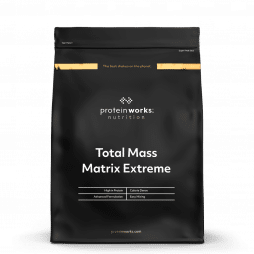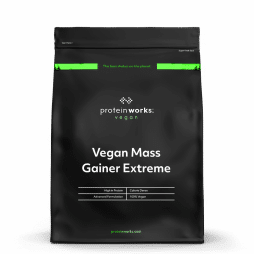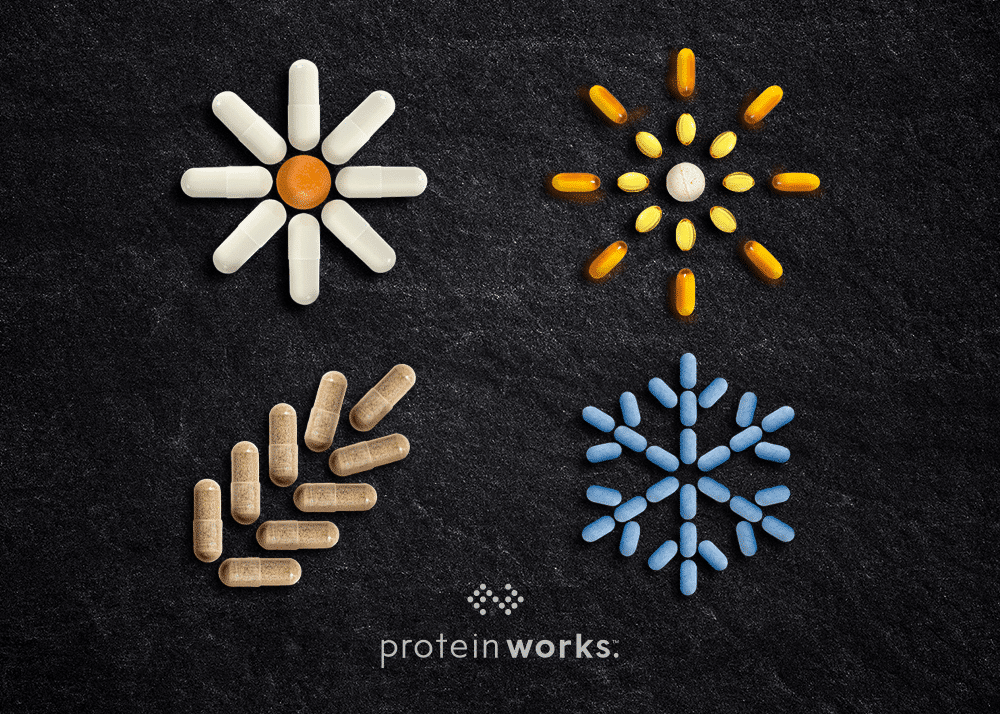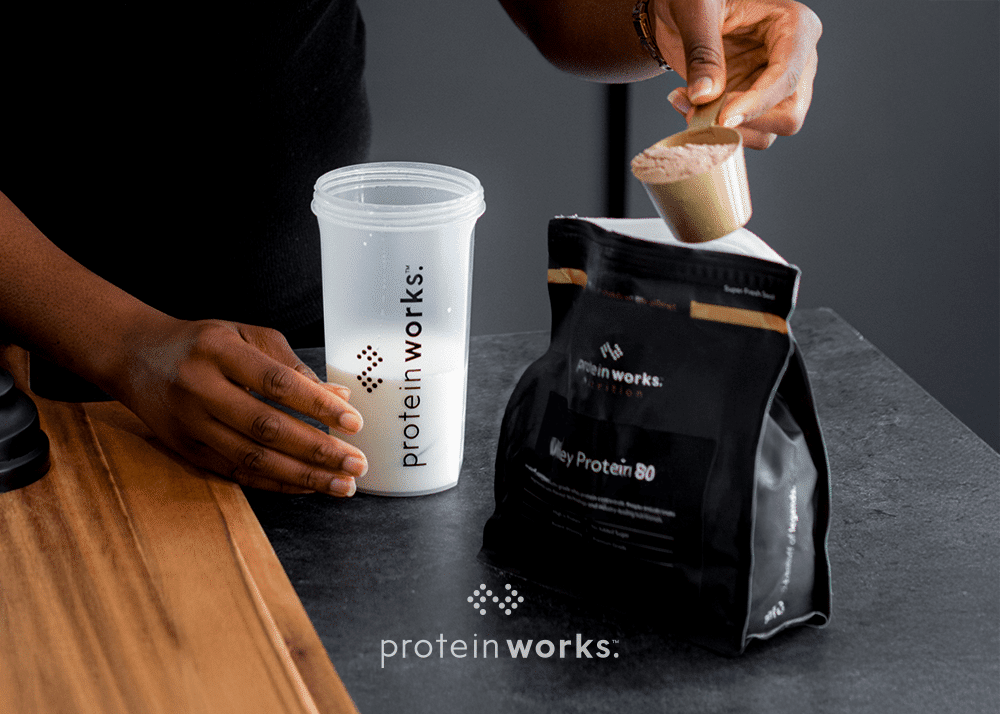
Beginners 4-Week Bulking Meal Plan
In the realm of gaining size and building muscle, the days of mindless calorie consumption are long gone. Modern sports nutrition emphasises a smarter, healthier approach to bulking, yielding the best results.
Embarking on a bulking journey may seem overwhelming, but we’re here to guide you. Achieve desired results, maintain excellent health, and enjoy a nourishing diet supporting weight gain. Our meal plan offers six calorie-dense options daily, promoting lean mass gain healthily.
Read our tips and unlock your full bulking potential with our curated 4-week Bulking Meal Plan below…
Bulking Diet Tips:
Certain foods can really hinder your progress and affect your results, so it’s worth noting what to avoid as this can sometimes prove just as important as what to include in your diet. While it’s important to include a variety of foods, here is a list of certain things you should try to limit to achieve the best results possible:
- Foods with added sugars – sugar packs a calorie-dense punch however this comes with very little nutrients. Foods high in added sugars include chocolate, biscuits, ice cream, cake and sugar-sweetened beverages such as fizzy soft drinks, sports drinks and energy drinks.
- Deep-fried foods – yes, this may be a no-brainer but deep-fried food can promote inflammation and if you consume a high amount can lead to disease.
- High-salt foods – The amount of salt you consume has a direct effect on your blood pressure and makes your body hold on to water. This can cause a greater strain on your heart, arteries, kidneys and brain. So, it’s particularly worth limiting high-salt foods when engaging in strenuous exercise to reduce any additional strain on your heart.
- Alcohol – when consumed in excess, alcohol can adversely affect your ability to gain muscle mass and lose fat. It is therefore recommended that you try to reduce or limit alcohol during a bulk to get the most from your hard graft in the gym and diet.
You may also want to avoid certain foods before training that can slow down your digestion and cause stomach upset during your workout, these include:
- High-fat foods: High-fat meats, rich buttery foods and heavy sauces or creams.
- High-fibre foods: Beans, lentils, chickpeas and cruciferous vegetables like broccoli or cauliflower.
- Carbonated beverages: Sparkling water or carbonated soft drinks
If you aren’t sure of how many calories you need for a successful bulk, this will vary based on your height, weight, age and activity level. The easiest way to establish your personal maintenance calories is by using a Calorie Calculator or fitness app to work it out from your statistics (age, weight etc).
Generally speaking, the guidelines state than 2,500 calories is sufficient enough for a man to maintain weight and 2,000 for women. However, when the goal is to gain weight, you’ll need additional calories and should begin with a surplus of +20% (approx. 500 calories a day).
The Best Bulking Macro Ratio:
So how many of those 2,500 calories should consist of protein, carbs and fat? You may assume that 75-90% of those calories will be accounted for by protein. However, research now shows that the recommended ideal macro ratio should be split into a ratio of approximately:
Protein – 25%
Carbs – 40%
Fat – 35%
However, bear in mind this ratio is simply a guideline commonly used by people who have difficulty gaining weight. We suggest that if you follow this for 2 weeks and see no difference in your weight, then increase your calories by a further surplus of 200 calories a day and see if this has an impact.
4-Week Bulking Meal Plan:
Breakfast options – choose one from the following list each day
- 6 egg omelette with spinach (approx. 564 kcal)
- Large portion of protein granola, full fat milk and sliced banana (approx. 750 kcal)
- 1 or 2 bagels with our Peanut Butter (approx. 380/760 kcal)
- Large portion of protein porridge with blueberries and 2 tbsp peanut butter or large handful of nuts (approx. 470 kcal)
- 2 Poached eggs, smoked salmon and avocado (approx. 550 kcal)
Morning meal/snack options – combine these to increase calories if needed
- Total Mass Matrix shake (approx. 496 kcal) or Vegan Mass Gainer Extreme shake
- Handful of almonds (approx. 595 kcal per 100g)
- Greek yogurt with berries, seeds and mixed nuts (approx. 455 kcal)
- Small portion of chicken or turkey breast, carrot sticks (or any other veg you fancy) and hummus (approx. 450 kcal
- Apple with peanut butter (approx. 200 kcal) FYI: our Loaded Nuts take peanut butter to a new level, just try not to eat the whole tub in one go!
Lunch Options
- Chicken breast or turkey steaks, avocado, spinach and rice (approx. 700 kcal)
- Salmon fillet, sweet potatoes, broccoli and sesame seeds (approx. 700 kcal)
- Chicken breast, spicy salsa, wholegrain rice and mixed peppers (approx. 720 kcal)
- Vegetarian bean chili wraps with sour cream, guacamole and rice (approx. 900 kcal)
- Large baked potato (or sweet potato) filled with Tuna, sweetcorn (in light mayonnaise), avocado and a handful of grated cheese if you like (approx. 500 kcal)
Afternoon Snack options (select 1 or 2 daily depending on calories)
- Dark chocolate (approx. 65 kcal a square)
- Total Mass Matrix shake (approx. 496 kcal)
- Cup of mixed nuts (approx. 640 kcal)
- Beef Jerky or Biltong (approx. 410 kcal) try PW Beef Jerky, made from only prime selected beef and containing a massive 27g of quality protein
- 100g sliced cooked chicken or turkey breast (approx. 140 kcal)
Dinner options
- 9oz Sirloin steak, chips or mashed potato, wilted spinach, grilled mushrooms and tomatoes and a fried egg (approx. 871 kcal)
- Tuna steak or salmon with olive oil, two sweet potatoes, avocado and quinoa (approx. 900 kcal)
- Lean mince meatballs, pasta and Bolognese sauce (approx. 600 kcal)
- Burger made with lean beef, on white or wholemeal burger bun, chips, cup of green beans (approx. 1450 kcal)
- Tinned tuna niçoise pasta salad with 2 boiled eggs, olives, feta cheese, new potatoes, avocado, spinach, pasta with olive oil-based dressing (approx. 600 kcal)
- Chili con carne with wholegrain rice (approx. 700 kcal)
Keep it interesting:
To give yourself an additional boost of nutrients and flavour, add a variety of veggies such as peppers, onions, garlic and chilies to any meal you like. You may also add sauces and dressings to add more flavour and variety to your meals over the 4-week bulk, however be selective with what you choose (avoid creamy dressings or sugar-laden sauces) and just be mindful of how much sauce or dressing you add!
The Take Home:
Consistency is vital for optimal results in your diet and training, but incorporating a normal or indulging in your cravings occasionally can be beneficial. Remember, one meal won’t undo your progress or lead to significant weight gain. Bulking can be challenging, both mentally and physically, so having a well-deserved treat can boost morale and make the process more enjoyable and sustainable.
Keep in mind that everyone’s body is unique, and different diets and training approaches work differently for each individual. Discover what works best for you and your lifestyle through recording progress and weight gain. Don’t hesitate to experiment with your bulking meals to find the perfect fit and achieve the best results. It’s all about trial and error to determine what suits you best.
Bulking Meal Plan FAQs
How often do I need to eat when bulking?
- Meal frequency is a key factor to a successful bulk. So, aim to eat around 4-7 calorie-dense meals a day and you’ll be smashing your goals and seeing those gains in no time! We’ve offered plenty of options for each meal below, so you’ve free reign to mix and match to build yourself a bulking diet that will help you to quickly pack on lean mass in the healthiest way possible.
Do I need to use a mass gainer?
- While it’s possible to gain weight through diet alone, supplementing your diet with a high-quality mass gainer means that you’re able to easily create a controlled calorie surplus alongside a heavy hit of protein – our Total Mass Matrix Extreme has a staggering 54g protein per serving!
Can I achieve the bulking results I want as a vegan?
- Absolutely! There’s no reason why you can’t gain the same muscle building results if you are adhering to your macros and ensuring you’re consuming the necessary surplus of calories required for you. See our Vegan 4-week Bulking Meal Plan, created by our PW nutritionists to ensure you achieve your body and fitness goals.
How often do I need to eat to get the best results?
- Increasing meal frequency is one of the easiest and quickest ways to increase mass. This method is also much easier on your digestive system by spreading your calories over the course of a day in six to eight small meals, as opposed to three huge meals. The key to successfully gaining mass is eating more, more often. This isn’t always possible on-the-go, so it’s highly beneficial to supplement your diet with the addition of a gainer such as our Total Mass Matrix shake for the very best results!
Bulking isn’t strictly for guys, right?
- Absolutely not! It’s safe to say we’re officially in the era of ‘Strong over Skinny’, with more and more women looking to change their shape through fitness! For more information on female-focused gains, our Bulking Guide for Women is packed with bulking tips for women to successfully gain muscle and achieve your desired body goals.
If you want to learn more about bulking, take a look at our articles on How Long Before I See Results From Bulking? or Does Protein Make Women Bulky? However, if you know your stuff, browse through our Mass Gainer products right here.









No Comments yet!